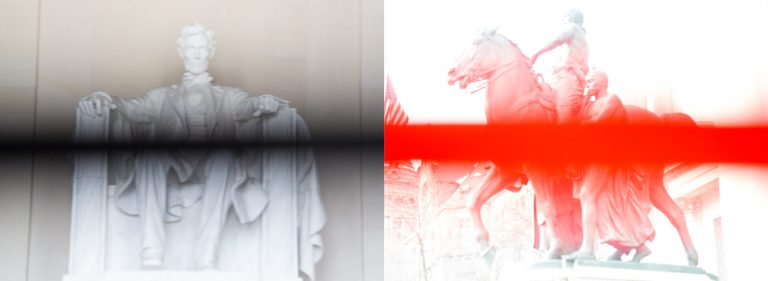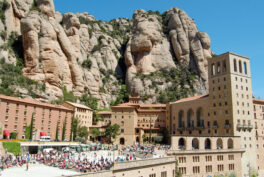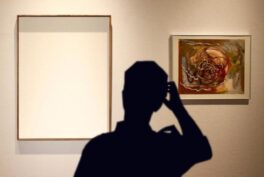Socrates Sculpture Park is one of the only art spaces in New York City that was permitted to stay open to the public through this pandemic. The staff at Socrates has put on an exhibition program that could not have possibly foreseen the global health, economic and political crises of 2020, but is prescient nonetheless. The current exhibition, Monuments Now, opened in mid-July when heated debates had resurfaced over national monuments in connection to the Black Lives Matter movement.
People are talking about, and in some cases taking action against, heroic monuments that are racist and representative of biased histories. These critiques are not new but these protests have revived the sentiment that it is unacceptable to hold these monuments in high regard. In response, some governmental and institutional bodies have acquiesced with the removal of Confederate statues and flags, which are blatant symbols of oppression. Corporations have also agreed to retire brand names that are overtly racist and insensitive.
Click here to read more about the recent liberation of Aunt Jemima nearly fifty years after the artist Betye Saar initiated this campaign in 1972, addressing the racist stereotypes of corporate brands. Now is the time to decontextualize, displace, and fill in the blanks of forgotten histories. Monuments Now is a reminder that demands for ongoing reform must continue to unfold in public forums in order to move forward.
Monuments Now, Socrates Sculpture Park, Long Island City, New York
Part I of this three-part exhibition opened in mid-July and will run through March 14, 2021
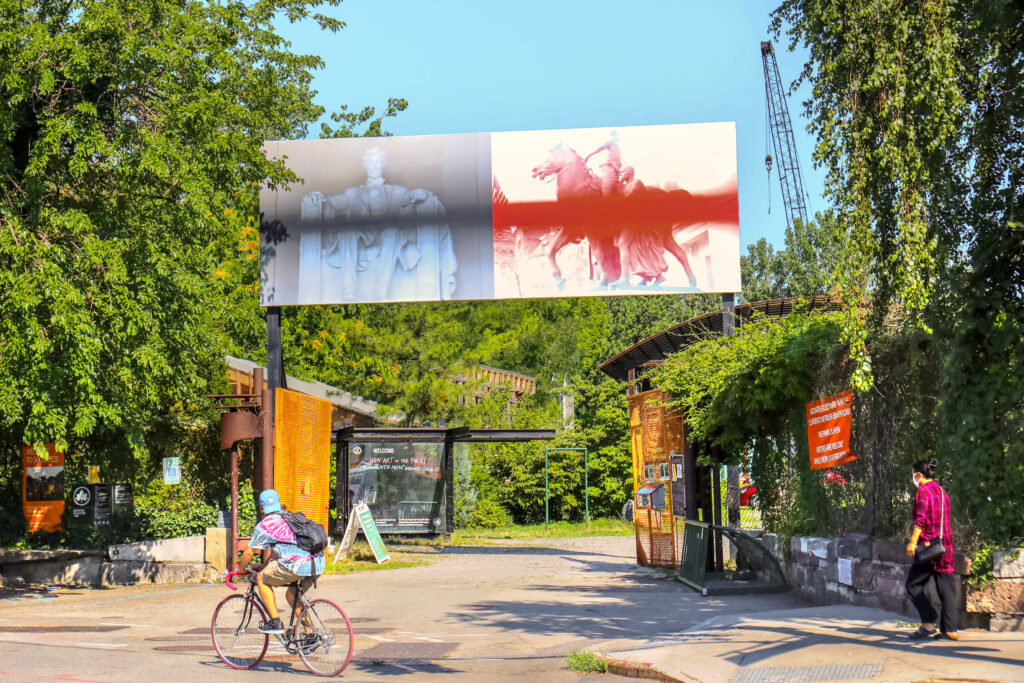
Nona Faustine
At the park’s entrance is the Broadway Billboard featuring In Praise of Famous Men No More by Brooklyn-based artist Nona Faustine. This billboard juxtaposes two images from the artist’s My Country series (2016-2020) probing the symbolic flaws of our national monuments. On the left is a reproduction of the Lincoln Memorial located in the National Mall in Washington D.C. and on the right is the Equestrian Statue of Theodore Roosevelt in front of the Natural History Museum in New York City.
Lines of Discontent
The My Country series was originally realized as photographs transferred to paper through the process of silkscreen. A fuzzy horizontal line runs through the center of each image; black across Lincoln and red across Roosevelt. These lines resemble the lines of static that used to run across television screens before our viewing experiences were revolutionized by cable and high definition TV. The static lines of Faustine’s billboard obstruct and cancel out the option to passively view national symbols that we have been conditioned to accept as representative of an objective history. The horizontal obstruction forces the viewer into a state of active looking, gives one permission to reject these symbols as truthful to a collective national heritage. The line of static is a reminder of a fragmented national memory that continues to suppress histories of slavery and genocide.
Roosevelt removed
Faustine completed the image of the Roosevelt monument for the My Country series before the Museum of Natural History agreed to remove this monument in response to critiques of the inferior representations of African and Native American figures in comparison to the figure of Roosevelt on horseback. The museum announced the removal in this New York Times article with the consent of Roosevelt’s descendants. The artist has explained that this series began as a mistake when she photographed the Statue of Liberty from the window of a ferry and inadvertently included the window frame in the photograph. Struck by the power of the void running across the photograph and covering the base of the statue, the artist was inspired to repeat this “mistake” with intention.
My Country symbolically knocks these monuments off of their pedestals presents viewers with monuments that visually buckle under the weight of the artist’s intervention. Blown up to billboard proportions, the void running across these two former presidents has forced open a space for truths and reconciliations to emerge.
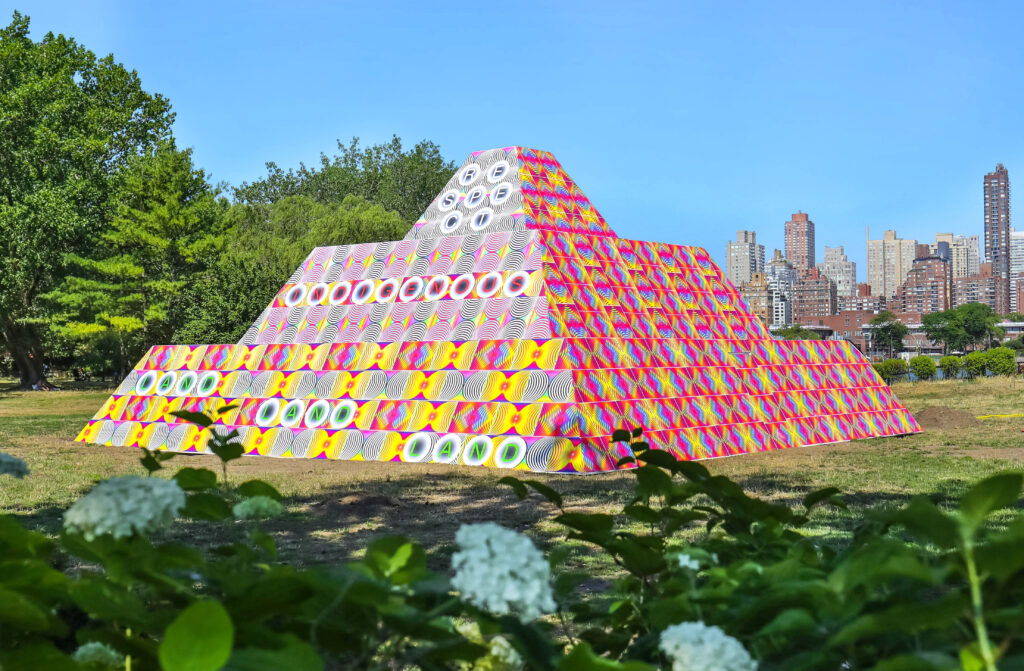
Jeffrey Gibson
The space for forgotten truths to come forth, as initiated by Faustine’s billboard, is realized on the park grounds. In the center of the lawn stands Jeffrey Gibson’s three-tiered pyramid Because Once You Enter My House It Becomes Our House, 2020. Constructed with plywood and steel and covered in posters of bright patterns and the following phrases on each of the four sides:
POWERFUL BECAUSE WE ARE DIFFERENT; IN NUMBERS TOO BIG TO IGNORE; RESPECT INDIGENOUS LAND; THE FUTURE IS PRESENT.
Native Origins
Gibson, who is of Choctaw and Cherokee descent, is referencing the mounds of Cahokia: an enormous metropolis built in 1050 by the North American Indigenous Mississippian people, which was a thriving center for the indigenous peoples of this region through 1400. Gibson is honoring the architectural achievements of Native North Americans with reference to the historical sites of Cahokia as well as the Serpent Mound in Ohio. White settlers and early archeologists in these regions refused to attribute such accomplishments to Native Americans whom they believed could not have been capable of such grandeur. This removal and exclusion of indigenous North Americans from western civilization is just another reminder that their histories remain compartmentalized and generalized into neat little narratives that are still not understood or taught.
Gibson’s majestic ziggurat engages the viewer through scale, color, and text while taking into consideration past and present circumstances concerning indigenous people and also taking into account the multiplicities of identity. The technicolor patterns that cover the surface of this structure recall textile patterns used for objects we associate with individual usage such as clothing or rugs. The vibrant pattern and text are in sharp contrast to the buildings of Roosevelt Island (the skinny island in the East River between Queens and Manhattan), and those of Manhattan just further beyond and across the river.
Reclaiming the Land
The text embedded in the pattern shouts back at the history of this region, honors those who were here before the white settlers, and speaks to those who are not willing to forget their own histories. To accompany this piece, the artist curated a series of events that activate this structure and the land it stands upon in Long Island City, Queens. On a recent evening, the Indigenous Kinship Collective (KIN), “a community of Indigenous womxn, femmes, and gender non conforming folx who gather on Lenni Lenape land to honor each other and our relatives through art, activism, education, and representation” performed a Native land Acknowledgment ceremony.
This ceremony was followed by a performance by Laura Ortman, of Apache descent, who performed an avant grade violin performance while standing on an upper tier of Gibson’s structure that was engulfed in pink smoke. Due to pandemic safety protocols, a live audience was not permitted to attend these events but the public was invited to watch via live stream. It is unfortunate that it was not possible to experience these powerful events in person with Gibson’s monument as the centerpiece.
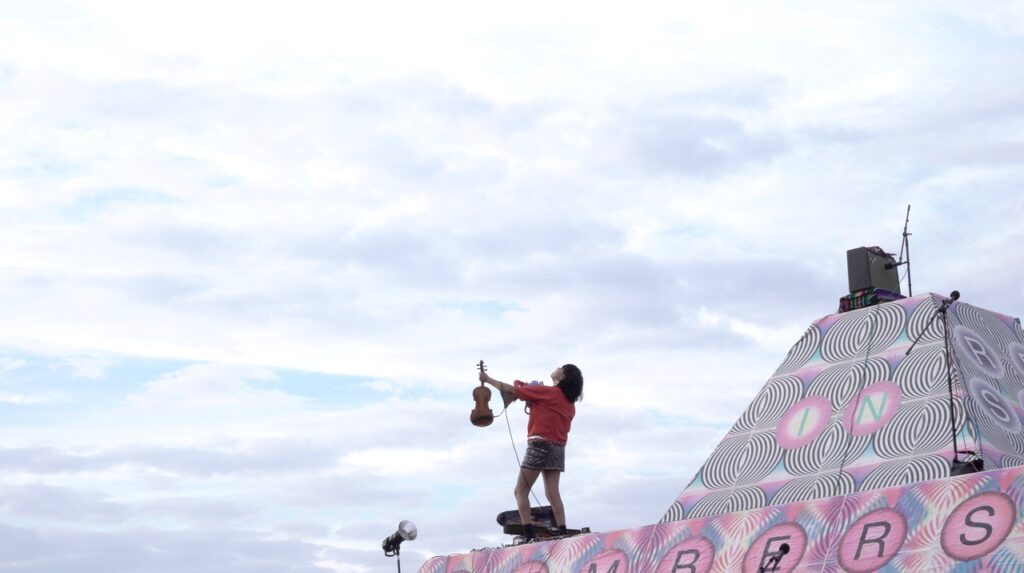
More Works on the Way
Socrates Sculpture Park is unveiling Monuments Now in three stages. In addition to the work already installed, Part I will present installations by artists Paul Ramírez Jonas, opening at the end of July, and Xaviera Simmons, opening mid-August. In October, the park will open Parts II featuring artists who were selected in response to an open call and Part III, a collaboration with local high school students. Monuments Now is a breath of fresh air and brilliantly in sync with current events. The potential for this exhibition to carry forth these conversations is ripe with possibilities.
Read more about socially-engaged art:
